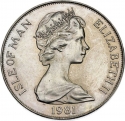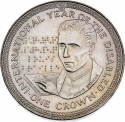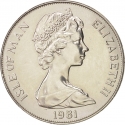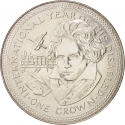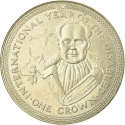You are about to finish your registration. Please check your mailbox (including spam folder). There should be a letter with a confirmation link. Check setting to make sure that your e-mail address is correct.
Send letter againDescription
A piedfort is an unusually thick coin, often exactly twice the normal weight and thickness of other coins of the same diameter and pattern. Piedforts are not normally circulated, and are only struck for presentation purposes by mint officials (such as patterns), or for collectors, dignitaries, and other VIPs.
In 1981, the UN declared the International Year of Disabled Persons (IYDP) to promote equal opportunities and disability prevention. The IYDP led to the World Programme of Action Concerning Disabled Persons and the International Decade of Disabled Persons (1983-1993). December 3 became the International Day of Persons with Disabilities in 1992.
The Yemen Arab Republic (YAR), also known simply as North Yemen or Yemen (Sanaʽa), was a country from 1962 to 1990 in the northwestern part of what is now Yemen. Its capital was at Sanaʽa. It united with the People's Democratic Republic of Yemen (commonly known as South Yemen) on May 22, 1990 to form the current Republic of Yemen.
Obverse
_Rials_25/1981_08.05.2024_22.19-60.jpg)
|
Depicts the coat of arms of the Yemen Arab Republic (1974–1990) surrounded by the inscription "Central Bank of Yemen" in Arabic above and dates below. البنك المركزي اليمني |
|---|---|
Reverse
_Rials_25/1981_08.05.2024_22.19_01-60.jpg)
|
Depicts a portrait of a Yemeni writer Abdullah Al-Baradouni facing right encircled by the inscription above and denomination below. - INTERNATIONAL YEAR OF DISABLED PERSONS - |
| Edge |
25 Rials
Piedfort
KM# P1 Schön# 147a
Related coins
International Year of Disabled Persons
_Rials_25/1981_08.05.2024_22.19.jpg)
_Rials_25/1981_08.05.2024_22.19_01.jpg)
